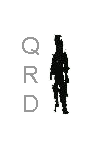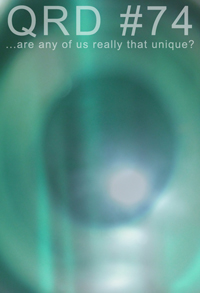
 |
| about
this issue Featured Band Interview: Rivulets Bass Player Interviews: Tony Zanella of +/- Channing Azure of Alpha Cop Eric Baldoni of Colt Vista Jeanne Kennedy Crosby Rob Kohler Derek M. Poteat Guitarist interviews: Campbell Kneale Antony Milton of PseudoArcana Nevada Hill of Bludded Head Malcolm Brickhouse Chvad SB Scott Endres of Make Label Owner Interviews: Russian Winter Records Hello.L.A. Moving Furniture Basses Frequences Saxwand Records Comic Creator Interviews: Richard Van Ingram Tyler Sowles JB Sapienza Troy Vevasis Victor Couwenbergh Terry Hooper Travis Hymel Robert Hendricks Dirk Manning |
 |
 |
 |
 |
 |
 |
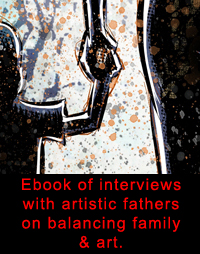 |
|
|
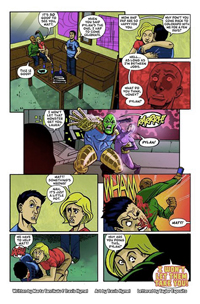 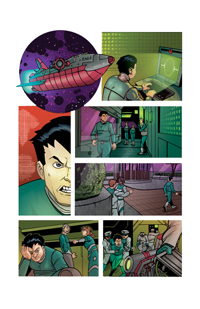 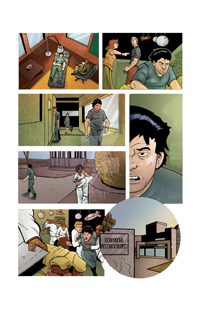 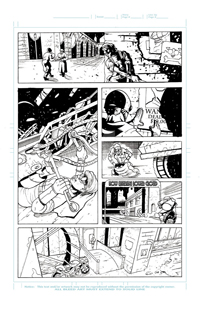 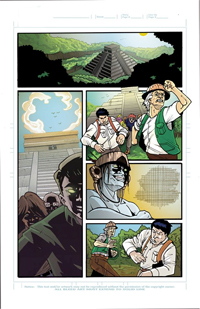 |
July 2015
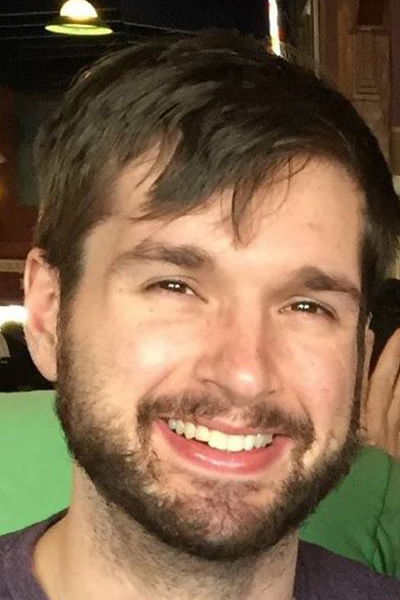
Name: Travis Hymel
City: Burlingame, CA (Originally from New Orleans, LA)
Comics: Memoirs of the Mysterious (Rampaging Monster Comics), The Gathering: Mosaic & Limitless: Steampunk 2 (GrayHaven comics), The Prompt, Boogey Brigade
Websites: https://www.facebook.com/ArtOfTravisHymel, http://twitter.com/travis_hymel, https://instagram.com/travis_hymel
City: Burlingame, CA (Originally from New Orleans, LA)
Comics: Memoirs of the Mysterious (Rampaging Monster Comics), The Gathering: Mosaic & Limitless: Steampunk 2 (GrayHaven comics), The Prompt, Boogey Brigade
Websites: https://www.facebook.com/ArtOfTravisHymel, http://twitter.com/travis_hymel, https://instagram.com/travis_hymel
QRD – How old were you when you first got into comics & did you always stick with them or did you come back to them?
Travis – So I first got interested in comics like a lot of other artists when I was a kid. I grew up with Superman being the go to comic I’d look for in the magazine rack at a local store. Even though I was too young to read them at that time, I would flip through & look at the art. From then on while I was a kid I had it in my mind to become an artist.
However, I got older & during my high school years I dropped comics & started an obsession with anime. It wasn’t until college that I fell back into reading comics. Some more time passed & I met a group in New Orleans that consisted of a lot of comic book artists. These guys inspired me to pursue drawing comics & I’ve been at it for almost 2 years. It wasn’t until I was 27 that I had my first published work, “Last Goodbye” in Memoirs of the Mysterious, out there.
QRD – What was the first comic book you ever bought?
Travis – I can’t tell you the exact title, but it was a Superman & Batman comic from the late 80s. I wish I could tell you the exact title. I just remember I carried it with me everywhere & that it was being held together by a lot of scotch tape.
QRD – How old were you when you put out your first comic?
Travis – My first bit of work was in Memoirs of the Mysterious when I was 27. It was with a story written by Jeremy Thomas called “Last Goodbye”. I was really nervous about doing it, because I never really worked in comics before this. I always drew pin-up like stuff before this & those were mostly for fun. Drawing a story was a whole other thing. At the end of doing it I was hooked & wanted to make more comics.
QRD – Why comics instead of just writing or drawing?
Travis – Since I was a kid I always liked telling a story. Now I get that chance whether it’s my own or someone else’s story. I relish the chance to tell a story visually & enjoy the challenge it can bring. I don’t think people realize just how much of a challenge it is to interpret something that was written into a visual story.
QRD – Do you see mini-comics & indie comics as paths to mainstream comics or as their own unique media?
Travis – It depends on the creator. It can be a path to mainstream comics if that’s what your plan is. I personally would love to end up working for one of the big two, however I would still rather tell my own story involving my own characters.
QRD – Do you think stories should be serialized or delivered as complete works?
Travis – I personally think either could work. However, I have a book, Boogey Brigade, I’m going to be putting out later this year that I can’t talk about too much yet, but the debate of serializing this versus making it a graphic novel has crossed my mind. In the end I’m deciding to serialize it with the possibility of collecting it into a trade paper back. The reason being is that I have a small fan base. Not a lot of people know who I am yet or have even seen any of my work. I feel that putting out my book in single issues allows me to build a fan base & will be more appealing to buy at a lower price than trying to sell them a graphic novel that may or may not interest them.
Now a days buying a comic reminds me of buying video games. You saved up your money, you go to the store & you pay a lot of money for a game. Then the game turns out to be garbage. That tends to happen because the market is flooded by publishers who are just trying to take up shelf-space. The same can be said for the comics industry. Now I’m not saying that every graphic novel being bought is garbage, but consumers are wary of how they spend their money in today’s market. So that’s why I’m using my single issues to be almost like a preview for my TPB or it can even be a jumping on point for a new reader.
QRD – How long is it from when you start a comic until it’s printed?
Travis – I usually can do a whole page pencil & ink in a normal day give or take a couple of hours. The last two anthologies I worked on took about 6 months to be put out in print from when the art was sent to the publisher.
My own book Boogey Brigade was actually finished last year, but due to me working on a few other projects & prepping the next two issues it will finally see print around late August 2015.
QRD – What do you do better with your comics now than when you first started?
Travis – I think I have gotten way better at making my characters “act” way better than when I first started. When I look at my old work, a lot of the characters are stiff or don’t have the right emotional expressions on their faces. Since then I think I have improved mostly from just doing my life drawings & studying references.
QRD – Do you do thumbnails?
Travis – I do thumbnails for everything I work on. At first I didn’t even bother. I thought it was way better to just be organic & come up with layouts on the spot. I was very very wrong. It actually took me awhile to realize how much of a help/time saver it can be. I actually keep a copy of the thumbnails on my worktable just for reference.
QRD – At what size do you draw?
Travis – I typically work at 11x17 with bleeds. I have done smaller strips before, but I mostly stick with 11x17 that have my guides printed on them.
QRD – What kind of pens do you use?
Travis – I personally use a variety, for my pencils I use random mechanical pencils & blue non-photographing Prismacolor brand pencils. For inks I tend to favor my .03 Copic multiliner, various sized Prismacolor multiliners, a Copic brush pen, a Farber-Castell brush pen, & of course black Sharpies (for larger black areas).
QRD – What does your workstation look like?
Travis – It looks like chaos. I have a glass top drafting table with some pen holders on the side. The penholders on the sides are barely used due to my laziness. The pencil tray underneath the top of my table holds a variety of the pens previously mentioned, various markers, & random anatomy reference books. On the top of my desk at the moment are random pages for an anthology pitch I’m working on.
QRD – At what point in the artistic process do you work digitally?
Travis – Lately I actually start from the get go digitally. I layout my page in Photoshop according to my thumbnails. Then use my Wacom tablet or my Surface Pro 3 to rough out the pencils in either Photoshop or Sketchbook Pro. Once I have the pencils sketched I print it out so I can tighten up any more pencils if I have to & ink it. Once I finish my inking I scan it back in & clean it up digitally in Photoshop.
QRD – What do you think of digital comics & webcomics?
Travis – I think in the next 5-10 years digital comics & webcomics are going to catch on & be as big as print. I don’t think print will ever go away, but digital comics in general will see huge growth sooner or later.
I think the idea of having a digital comic &/or webcomic overall is great for an indie creator. We live in a time where we have tons of tools & resources available where anyone can easily create comics & webcomics. Not only can you create your own comic easily, now you can distribute it just as easy. There are a ton of sites to offer your digital comics through & just as many places to host a webcomic. Digital comics for an indie creator allow you to cut out the middleman in terms of having a publisher. It allows you to self-publish with ease.
QRD – Do you prefer working in color or black & white?
Travis – I have worked in both. I personally prefer color because it makes my work pop more than it does in black & white. My new book Boogey Brigade is full color & is the first full book I did colors for. It was very time consuming but worth it.
QRD – How many different people should work on a comic & what should their jobs be?
Travis – After working on my first issue of Boogey Brigade I realized I need to have a bigger team on the book. The first issue I made has pencils, inks, & colors by me with lettering duties done by Shawn Aldridge (http://shawnaldridge.blogspot.com). For the next issue I’m going to be hiring a flatter to assist with the colors. I would love to do the whole book myself; but I’m going to be looking for a publisher, so I’d have to keep up with deadlines.
At the end of the day, how many people involved on a project comes down to the creator(s) of the comic. I feel if you are trying to put a full comic out on a monthly basis, you would need some extra help. It just depends on the scale of the book.
QRD – How do you find collaborators?
Travis – I have found a lot of collaborators through social media groups such as the Facebook group Small Press Commandos which connected me to other FB groups.
QRD – How tight do you think a script should be as far as telling the artist what to draw?
Travis – I think it should be as tight as possible, but at times as an artist I’ve had to make a call to maybe change out a layout that the writer was looking for. I’ll only make those calls if I think what the original script calls for does not go with the rest of the page visually.
QRD – What comic book person would you be most flattered to be compared to?
Travis – Hands down Ryan Ottley. Ryan Ottley’s run on Invincible had a huge impact on me style wise. That guy is amazing. If I was to be compared to him it would mean I’m really getting somewhere.
QRD – What do your friends & family think of your comics?
Travis – Like most family & friends, they love it. I think that they are just happy to see me doing something I love. I came from a very encouraging family & my friends have been an amazing support system for me as well.
QRD – What do you think of superheroes?
Travis – I personally will always have a soft spot for superheroes, but I don’t think traditional superheroes are relevant for indie creators. That’s not to say indie creators can’t or shouldn’t make new superheroes. The genre is just dominated by the big two & most indie superheroes created can’t shake being compared to heroes that already exist.
That being said, it’s still possible for an indie creator to make a great superhero, the challenge is how to make that character different or how to make the reader look at the genre differently. Take Invincible by Robert Kirkman for example. He basically took a character & modeled him loosely on established heroes, but he portrays this hero in a completely different perspective than the heroes he references.
QRD – Marvel or DC?
Travis – I’ll always be a Marvel guy. I grew up in the 90s reading mostly Marvel stuff. However, they lost me for a while around the time of Heroes Reborn.
QRD – What comic characters other than your own would you like to work with?
Travis – The short list of characters I would love to work with would be as follows: John Constantine, Hellboy, & Spider-Man. I’d pick Constantine & Hellboy mostly because I’ve been drawn to more supernatural type stories lately. Lastly, Spider-Man because it’s freaking Spider-Man. The stories from the last 10 or so years have been so-so (with the exception of Spider-Verse) but I’d love to have a crack at drawing him for Marvel.
QRD – Ideally would you self-publish?
Travis – At this point in my short career no. I really want to reach a publisher that can help me distribute my comic farther that I can on my own.
Now that’s not to say I would never self-publish. Self-publishing is my back up plan for Boogey Brigade should it not find a publisher.
QRD – What conventions do you try to attend & why?
Travis – Well I moved to California a year ago & was kind of settling in, so I didn’t really do any cons. This coming fall & for 2016 I plan on doing as many cons as I can. The big cons I have planned so far are Wizard world San Jose in September & APE (Alternative Press Expo) in San Jose.
QRD – How do you feel about doing work for anthologies?
Travis – I love doing work for anthologies. It’s like a sampler platter of genres to draw for me. I get to do a little horror, some sci-fi, steampunk, etc. It allows me to work with a variety of stories instead of just being tied to one.
QRD – What do you do to promote your books?
Travis – I mostly promote them through cons & social media pages. I enjoy promoting through cons the most. Cons for me at this point don’t give me a lot of reach yet as far a promoting goes. However, I get to have a more personal connection to fans than I would otherwise.
QRD – Do you think your comics are well suited to comic shops or would sell better elsewhere?
Travis – So I still can’t say much about Boogey Brigade, but content wise its suited to be sold anywhere. Originally, it was going to be the bloodiest comic I worked on. Upon hearing my idea, one friend in particular told me to scale it back some & make it all ages. That way I can reach a wider audience & the heart of my story really didn’t call for all the violence I originally wanted.
As far as my other work, all of the stories I worked on are well suited to be sold in shops as well. Those were mostly all ages sci-fi stories for everyone. However, this pitch I’m a part of for a new anthology is the first that will feature some blood & guts.
QRD – What do you see as the most viable mediums for comics distribution 10 years from now?
Travis – I think this kind of ties in with the digital comics question earlier, but I think digital will be the most viable in the future. I don’t think print will ever go away, but digital has a chance to rival it. Digital distribution of comics is far cheaper & faster than print. I can pay less due to no printing costs & download instantly to any viewing device. It’s incredible when you think about it, because the idea of digital distribution is still new & you have a variety of digital distributors. Unlike print, there is not just one big distributor for comics. You have Comixiology, Amazon, DriveThruComics, & others that are able to distribute digitally. Some creators can even bypass those websites all together & sell & distribute digitally just through their site. No middleman. Just you & the consumer. It will take more time, but digital distribution will be huge for the comics world.
QRD – Anything else?
Travis – To view some of my work please check out my Facebook page, Art of Travis Hymel & follow me on twitter/instagram @travis_hymel to see what I’m working on & for updates on my upcoming book Boogey Brigade. Also go to grayhavencomics.com to buy The Gathering: Mosaic & keep your eyes peeled for Limitless: Steampunk coming out sometime in September.
